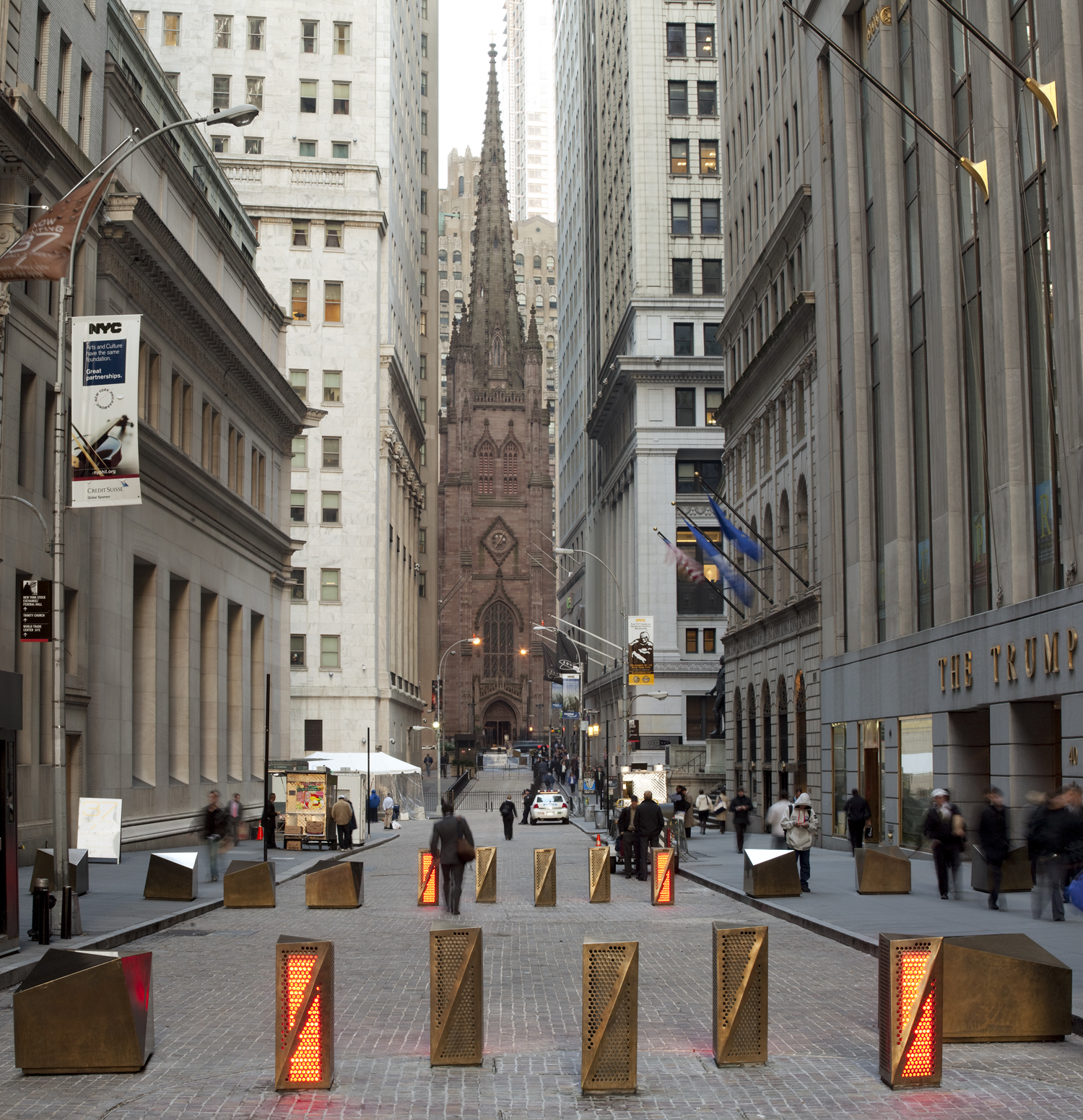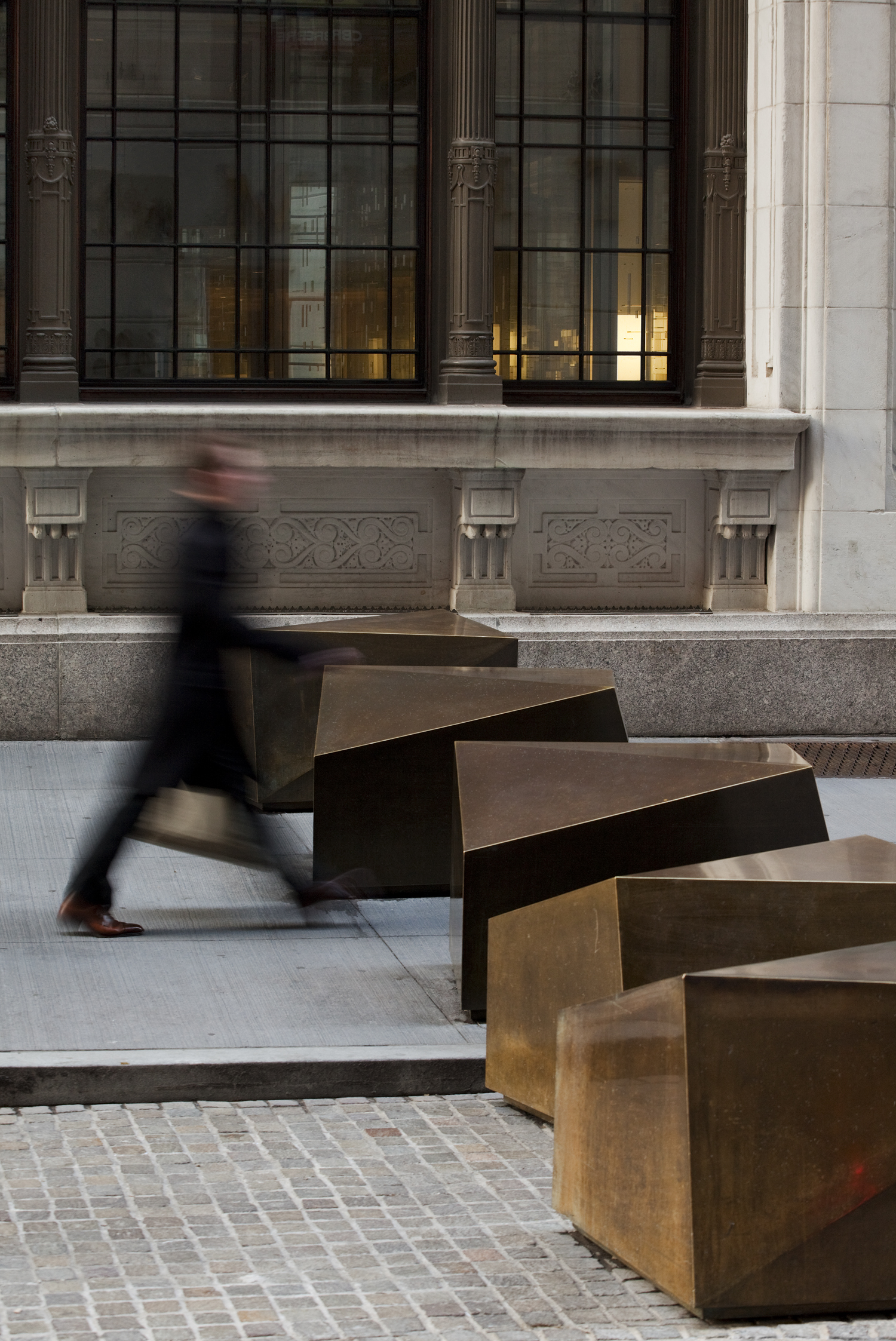“In high profile buildings or crowded places that may be attractive targets for terrorists, the challenge for designers is to incorporate counter-terrorism measures into their buildings and public spaces whilst maintaining quality of place.” RIBA guidance on designing for counter-terrorism
In recent years, terrorist attacks in London, New York, Berlin, Barcelona and Nice have heightened concerns about the safety of living in and travelling to cities in Europe and North America. In many of these attacks, cars or trucks have been driven at high speed into crowded streets with the aim of causing the maximum number of casualties. While such attacks remain relatively rare, planning authorities are now working on methods to deter and thwart the use of vehicles as weapons in public spaces.
From buildings and infrastructure to “soft targets”
The attacks on London’s transport infrastructure in 2005 and an abortive car bomb attack at Glasgow Airport in 2007 prompted a rethink in the UK about how to protect people from acts of terrorism. As a result, protective cordons and barriers were installed at government offices, public buildings and transport hubs.
Subsequently – and perhaps as a consequence of the success of these measures – terrorists have changed tactics, focusing their attention on members of the public in crowded city centres. These so-called “soft targets” are harder to protect, partly because of the scale of defences that would be required, but mostly because city authorities want to retain the open and accessible nature of places which are most attractive to shoppers, tourists and businesses.
Approaches to protection
Guidance issued by the Home Office in 2012 explains how public authorities, communities and the private sector can mitigate terrorism risks by physical, technical and procedural measures, such as speed gates, barrier systems, closed-circuit television cameras and sufficient stand-off distance between vehicles and buildings. Similar guidance has been adopted in the United States, and most recently in Australia, which has also developed a self-assessment tool to help owners and managers of public spaces to assess their own risk.
Safer places with style
The challenges presented by terrorist attacks have prompted urban planners and architects to think again about how to protect the public without creating forbidding strongholds.
A successful example of an innovative approach can be found in New York City’s financial district. Home not only to the New York Stock Exchange, but to museums, shops and waterfront entertainment attractions, this part of the city is a vibrant area that brings together many people from different walks of life.
It’s this widespread appeal which makes the financial district a potential target for terrorism, and which presented Rogers Partners Architects + Urban Designers with the challenge of ensuring its security while retaining the positive aspects of the area.
Working with stakeholders, city agencies, and law enforcement officials, the architects came up with an innovative concept that includes sculptural barriers which play a dual role of seating and security. These “NOGO” installations quickly won over pedestrians and were widely applauded in the media. The Chicago Tribune was noted that the NOGO’s bronze surfaces:
“…echo the grand doorways of Wall Street’s temples of commerce. Pedestrians easily slip through groups of them as they make their way onto Wall Street from the area around historic Trinity Church. Cars, however, cannot pass.”
Closer to home, the National Assembly for Wales has also adopted counter-terrorism measures to protect the people who work in and visit this major public building. The architects have taken advantage of the public plaza around the building to achieve sufficient stand-off through landscaping. In addition, staircases and reinforced street furniture contribute to the protective facilities without turning the building into a fortress.
Secure and liveable public spaces
“Barbed wire and concrete barriers may be effective, but they make city dwellers feel like they are living in a war zone.”
A Green Living
Urban planners have a fine line to tread between making people feel comfortable in public spaces while ensuring their safety. Concrete barriers may be effective, but if they make residents and visitors fearful, they are more likely to drive them away. And since that is what terrorists are aiming to achieve, it’s all the more important to get the balance right.
Our thanks to Rogers Partners Architects + Urban Designers in New York City for supplying the information and photographs concerning the streetscapes and security project in the financial district.
Follow us on Twitter to see what developments in public and social policy are interesting our research team.
Share
Related Posts
By Ian Babelon A new-old concept for proximity “Are we there yet?” Parents may patiently nod to their children’s insistent nudges on a 20-minute journey to… somewhere. Quite rightly, researchers have asked: twenty minutes to what? The answer may well ....
Following the adoption of National Planning Framework 4 (NPF4) at the end of February, the Scottish planning system and planning services are dealing with transitioning to a development plan system without statutory supplementary guidance and where the relationship to current ....
By Ian Babelon In the first part of two blog posts, published on 22 May, Ian Babelon provided examples of good practice in retrofitting social housing. The second part of this blog post looks at estate-wide and area-wide social housing ....



